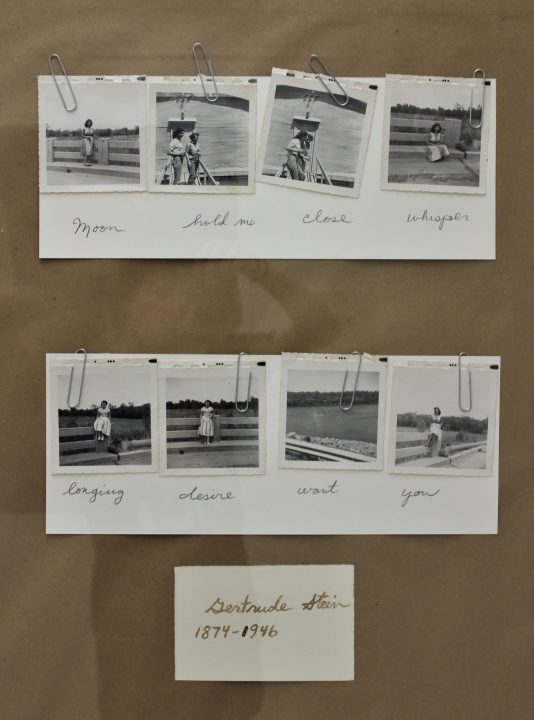Performance artist, musician and poet, Karen Finley recently impressed University of Maryland, Baltimore County with “Venus in Retrograde,” a performance dedicated to giving attention to the issues within modern society and its current political climate.
The first floor of the Fine Arts building extends Finley’s stay as it presents the artist’s collection, “Baltimore Psychic Portraits,” until Friday, Sep. 27. Inspired by people who have left their own impressions on the city of Baltimore, “Baltimore Psychic Portraits” explores abstract representations of their influences.
In a handwritten note displayed beside her art, Finely explains, “these portraits are created, not dependent on the traditional looking outwards at physical appearance, but rather a portrayal, an ‘intuitive’ portrait of automatic writing, received images and empathetic impressions for representation.”
Finley plants her own interpretation of the chosen figures onto various images including drawings, photographs, paper paint color strips and watercolor paintings. The artistic elements are laced together as a collection with the powerful use of Finley’s writing.
Depicted individuals include Edgar Allen Poe, Fredrick Douglas, Harriet Tubman, Gertrude Stein and Cab Calloway, as well as many more. The extreme relevance of the depicted individuals today further proves the long-lasting strength of their influences on modern society. Finley, however, ventures outside the effects traditionally associated with these famous figures.
The exhibit disobeys the expectations of conventional portraits as the pieces seem to depict the aura of the memory of the individual. One of the two images inspired by Poe is doused in black and gray swirls of watercolor, melding together portrayals of an eye and a bird — likely a raven inspired by his famous poem. Underneath, Finley writes, “Edgar Allen Poe the World Within.”
Finley’s depiction of Poe captures the darkness traditionally associated with his works, all the while paying an ode to the chaotic yet all-connecting nature of his ideas. In other words, his characteristic darkness had a purpose: it was an existential representation of the entire “world” he kept in his mind.
Six pieces of paper serve Harriet Tubman’s remembrance. Most of them consist solely of lines brimming the edges of the paper, extenuating the rectangular canvas and forming a pseudo-maze. Two of the papers present roughly identical drawings of shoes with flowers growing out of them. Around one, Finely writes, “Harriet Tubman make new friends the past is not the future answer.”
The drawings illustrate that, with her strength and path, Tubman took the first step in creating a new form of life. The surrounding lines reward Tubman’s persistence and dedication to change, announcing that the future should not be defined by the past.
Finley’s “Baltimore Psychic Portraits” show the impact of resilient individuals with characteristic simplicity. Her gallery sketches out the feelings the memory each figure evokes, paying ode to their influences, still relevant to this day.
Photo Credit: Karen Finley’s psychic portrait of Gertrude Stein. Photo by Elizabeth Baummer.


